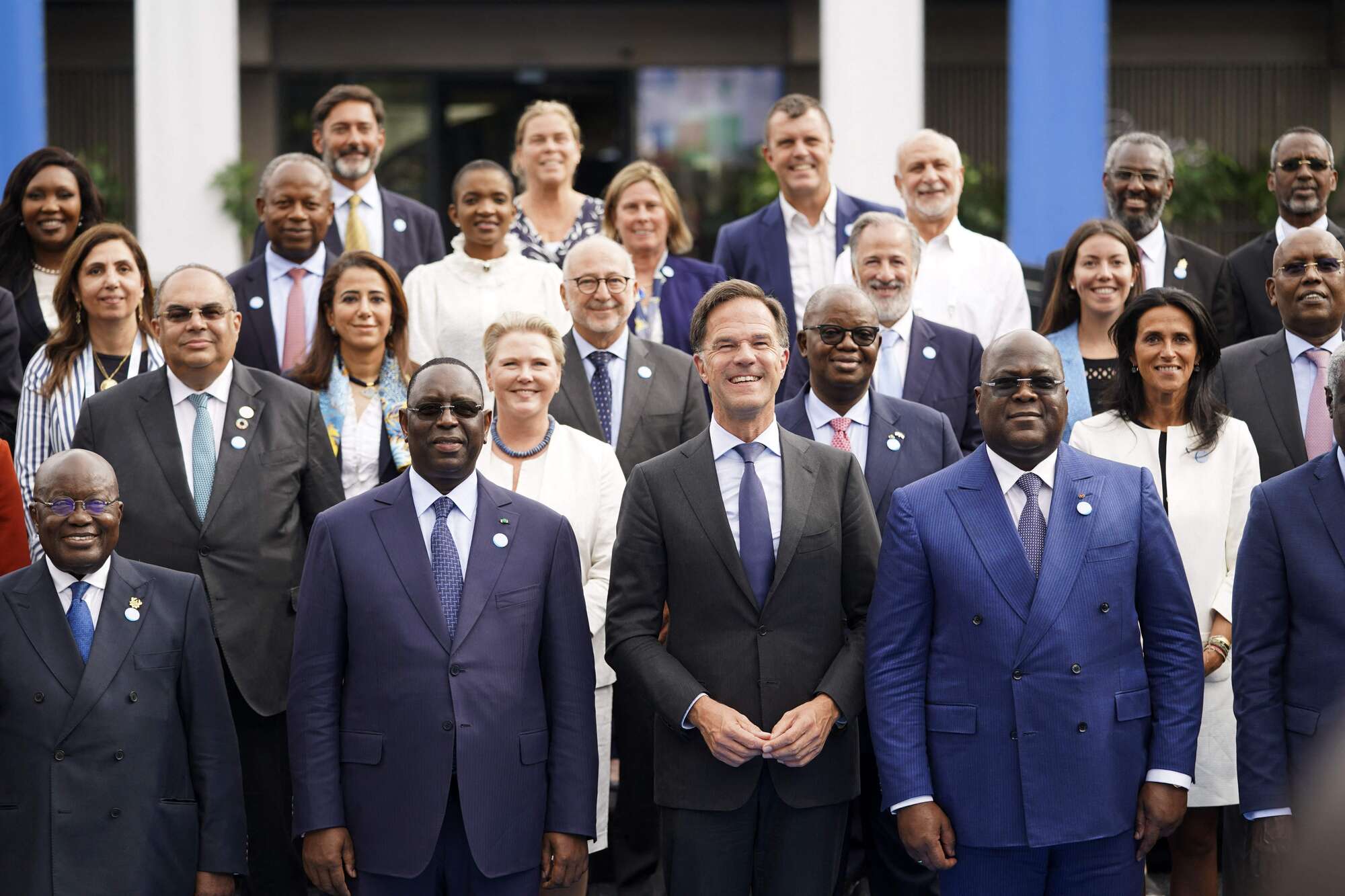News
Conversations to watch at climate summit in Egypt
Wednesday November 02 2022
African leaders and other world leaders pose for a group photograph at the Africa Adaptation Summit in Rotterdam, ahead of the COP27, on September 5, 2022. PHOTO | AFP
The 27th edition of the Conference of Parties (COP27) gets under way in Egypt from next week, putting Africa one more time at the centre of the climate debate. The conference is expected to bring together 198 nations that are part of United Nations Framework Convention on Climate Change (UNFCCC).
It is the highest decision making body of UNFCCC and converges annually since 1995 to discuss and agree on how best to address climate change and its impact. This is the 27th time countries will be gathering under the convention —hence, COP27— in Sharm el Sheikh, an Egyptian resort town on the Red Sea coast. It will be the fifth time that the conference is held on African soil –Morocco twice, Kenya and South Africa.
What position does Kenya/Africa have on Cop27?
For Kenya, priority areas at the conference are in the reduction of emissions from all parties and financing. Kenya like other developing countries pays the biggest brunt of climate change, despite big economies being the largest emitters of carbon dioxide to the atmosphere.
How severe is the climate crisis for Kenya?
The climate calamity in Kenya is manifested through prolonged droughts, wildfires, wildlife deaths, flash floods, crop failures and expensive fuel, which has in turn resulted in high cost of commodities. This is the first time in decades that drought has killed more wildlife in parks than poaching. In recent times, there have been frequent fires in Mt Kenya and the Aberdares, engulfing the country’s largest forest ecosystems. At the same time, pastoralists are encroaching on farms in search of pasture, resulting in human conflict.
The National Drought Management Authority says Garissa, Isiolo, Kajiado, Kitui, Mandera, Marsabit, Laikipia, Samburu, Tana River, Turkana, and Wajir are currently at an acute drought phase, with most of these counties suffering a severe vegetation deficit.
When do we know Africa is winning?
In the context of developing countries, agriculture is unquestionably the sector most exposed to climate variability. A recent study published in the journal Economia Politica recommends that planning of adaptation policies to reduce climate vulnerability account for multiple spatial interrelations. Secondly, the researchers call for the explicit inclusion of peacekeeping measures in the design and implementation of adaptation strategies for climate resilience to avert persistence of violence.
Which are the most-watched topics at CO27?
Fossil fuels: Countries at last year’s COP26 talks agreed for the first time to “phase down” coal production and trim other fossil fuel subsidies.
The backsliding by major economies on their promises to shift from fossil fuels has led some nations, especially in Africa, to call for a formal recognition that they should be allowed to develop their fossil fuel reserves. This is likely to be evident in African leaders’ opening statements at COP27.
Adaptation: High-income countries have yet to meet their pledge to deliver $100 billion a year in climate finance. Only $80 billion per year was delivered in 2019. Nevertheless, the talks will address boosting that annual goal upward from $100 billion from 2025.
Keeping 1.5 alive: At COP26, countries promised to “revisit and strengthen” their national climate plans, called Nationally Determined Contributions, or NDCs, by the end of this year to ensure they are aligned with the Paris Agreement goal of preventing warming beyond 1.5 degrees Celsius above pre-industrial temperatures. But last month’s UN “synthesis report” on NDCs submitted this year show that only 24 countries out of 194 have updated their plans.

Leave a Reply